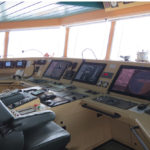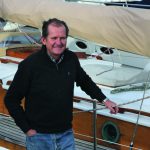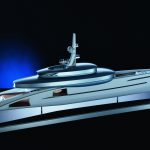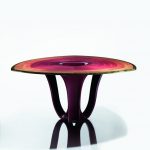It’s not just about the attitude of the person buying the »product« demanding a low environmental impact. Designers, builders and suppliers – in fact everybody in the superyacht industry – must help keep things sustainable and clean.
SustainRCA (Royal College of Art) in London is showing students how to tackle some of the largest problems faced on[ds_preview] the planet: waste, depleted natural resources and overconsumption. RCA students are renowned for designing innovative products, from vacuum cleaners to cars, but the focus of SustainRCA is to solve the problems of food waste and peak oil. Clare Brass, Team Leader at SustainRCA, said in a recent »Financial Times« (FT) report: »Changing the object, the car, is quite easy for a car manufacturer – they can change the model, they do that every year. Changing the way we process, transport and put energy into our car is a lot more complicated, so if we can manage to do that, we are likely to have a lot more impact.« Brass adds: »There is a desirability factor in design which is critical, because people will not change the way they do things unless there is a better, or more exciting, or sexier way to do them on offer.«
»To make mobility as sustainable as possible, both now and in the future« – this is Mercedes-Benz’ »BlueEfficiency« philosophy and it’s no »green wash« label. The umbrella term comprises many different ideas to reduce consumption and emissions, the objective to optimize each detail, whether for vehicles with efficient internal combustion engines, intelligent hybrid technology or emission-free electric vehicles.
Energy efficiency and improved design concepts
Dutch yacht builder Feadship, for example, – commonly associated as »the Rolls-Royce of yachting« – is ever active in its research to improve efficiency, with its »Future Concept« philosophy, including »Eco-points«, measuring environmental impact in building, running and scrapping boats. Feadship’s latest concept, following on from »X-Stream«, »F-Stream«, »Aeon«, »Breathe« and »Qi«, is a superyacht designed for Albert Einstein – »Relativity« – which, even though mainly a styling exercise, does manage to incorporate a low fuel-consumption central engine with twin boosters for sprints and an efficient Schilling rudder system.
Sustainable superyachting can learn from shore-based architectural design and build as well as the automotive industry and product design. Look at Hines, for instance: The privately-owned international real-estate firm, which is controlling assets valued at approximately 23 bill. $, has been involved in the US Green Building Council’s Leadership in Energy & Environmental Design (LEED) since 2001 and has won countless sustainability awards and top rankings as »Greenest Company« with highest scores ever awarded. Founder Gerald D. Hines, whose company was a founding member of the German Sustainable Building Council and the Russian Green Building Council, says: »In the end, efficiency may not be the exclusive domain of engineering. It seems it may be the key to a sustainable human existence, as well.«
A voluntary introduction of LEED ratings for the superyacht industry, whether for individual yachts or builders, could add a whole new meaning to popular »top 100« lists with »length« rankings being replaced by »environmental efficiency« through its lifecycle. Like the builders of skyscrapers, not only admired for their height today, Global Sustainability Officers will leverage sustainable opportunities and promote sustainability and energy efficiency. EEDI (Energy Efficiency Design Index), one of major technical regulations for marine CO2 reduction, and EEOI (Energy Efficiency Operational Index) will be the numbers to bandy about over dinner at the (carefully-sourced) wooden dining table. The chef might fill in guests on where the meal’s organic ingredients were sourced, with minimal energy used by the suppliers delivering and storing them, and the captain outline tomorrow’s itinerary with »improved voyage planning«, weather routing, speed and shaft power optimization. He might propose a dynamic-positioning lunchtime stopover to swim in a protected reef, the hybrid water toys being solar-charged en-route.
Use of sustainable materials during superyacht construction
Walking barefoot on teak decks, however, is still one of the tactile experiences unlikely to be dropped by superyacht guests for some time so big efforts are being made to ensure that at least teak is being sourced from well-managed forests. Wood Forever Pact, a program of the Prince Albert II of Monaco Foundation, is making every effort to make a tangible difference to the superyacht industry, raising awareness amongst builders and offering a non-profitmaking service with its partner The Forest Trust (TFT) to track the origins of any wood used on a superyacht, via timber suppliers, right back to the stump, and make positive suggestions for improvements.
Malcolm McKeon, who has just set up an own company after 31 years responsible for superyacht design at Dubois Naval architects, says »it is important to look at the energy used and the environmental impact during superyacht construction – and not just the resources used and fuel savings made during its operation.« Marine Construction Management (MCM), who have managed over 70 new builds and celebrate their 25th anniversary in 2013, have noticed that, while some owners still do not ask about sustainability – perhaps assuming builders and designers take care of that as a matter of course – more are now actively demanding that their superyacht is a model for good practice. MCM’s Newport USA office recently recruited an additional manager, Erika Moore, from the cruise ship industry to ensure its post-launch ongoing yacht management services benefit from knowledge gleaned in that highly-regulated environment. Specifics in the cruise ship industry, noted by MCM’s Moore include:
• Compliance with the Vessel General Permit (VGP) of the United States Environmental Protection Agency (EPA): changing to low-phosphate soaps in the galley and closer monitoring of discharges (i.e. grey water deck run-off).
• Compliance with international air pollution regulations: better monitoring of ozone-depleting substances and low sulphur die-
sel fuel.
• Giving back to destinations visited: donating toys to orphanages, delivered directly from the crew and sourcing food products from local farms and fishermen when possible.
Interior fit-out specialists, including the likes of custom-furniture builder Silverlining in the UK, go beyond what legislators demand and innovate with Research and Development into exotic finishes that don’t involve destructive deforestation. A recent example is a sycamore table (see top of the page) of which Silverlining’s Chris Townsend says: »The table is made using ripple sycamore. Sycamore is a reasonably fast growing tree (compared to an oak) but it is the ripple that is quite rare and an accident of nature. The exact cause for the ripple found in sycamore veneer is unknown but there are many theories. The effect is a stunning, natural reoccurring shimmer that is only enhanced by the autumnal colours of the table top.« Designed to last for generations, possibly longer than the superyachts they are installed on, a small amount of rare wood loved and appreciated by many, can arguably be justified.
»Perhaps owners and their guests
will soon unwittingly be doing their bit for
sustainable superyachting – as they press the organic-designed flush button«
Even the 70-acre private island rental Over Yonder Cay (OYC) in the Bahamas, which is entirely powered by solar and wind energy and whose battery bank was pictured in HANSA (9/2011, p. 34), sports some tropical hardwood furniture in its villas. Now open
for visitors, OYC actually offsets the estimated nearly 500 t of CO2
produced annually by the guests’ sailing yachts. A Youtube video of OYC’s opening party in 2012 shows the man behind it talking about harnessing energy thanks to the Moon – through tidal energy.
Wind an solar energy for yachts
Over Yonder Cay features possibly the greenest and most clean superyacht marina (by invitation only) and the island’s four villas must rank as a role model for clean ocean and beach lovers, perhaps wishing to arrive by yacht.
Soon shore power connections at the dockside in marinas worldwide might offer yachts tidal or Ocean Thermal Energy Conversion (OTEC) energy. Pedro Montiero, the Chief Technology Officer of OYC, says: »Currently, yachts docked at Over Yonder Cay would benefit from wind and solar production, as OTEC and tidal energy production has not been implemented yet.«
In the meantime, a date for superyacht movers-and-shakers to put in their diary is 26 March 2013, when the Yacht Club de
Monaco’s »La Belle Classe Superyachts« environmental dinner debate takes place.
The above quoted FT article ends with a student’s innovation called »Loowatt«, an off-grid sanitation and power system that combines waterless toilets with an anaerobic digester to deliver hygienic and odourless management of waste with the production of bottled gas for heating and cooking. It was funded by InnovationRCA, a pilot project supported by the Gates Foundation. (It got me thinking of my RCA time in the 1980s when a fellow student presented the »Turd Extruder« as »fun for all the family« with a variety of different shapes. He was clearly ahead of his time and yachting fans may soon find a novel addition to the water toys – this one in the WC). Perhaps owners and their guests will soon unwittingly be doing their bit for sustainable superyachting – as they press the organic-designed flush button
Nick Jeffery
























